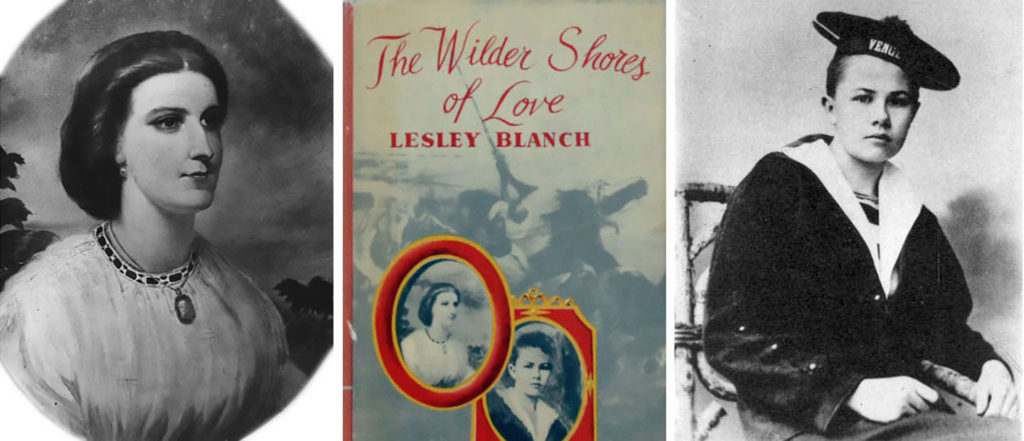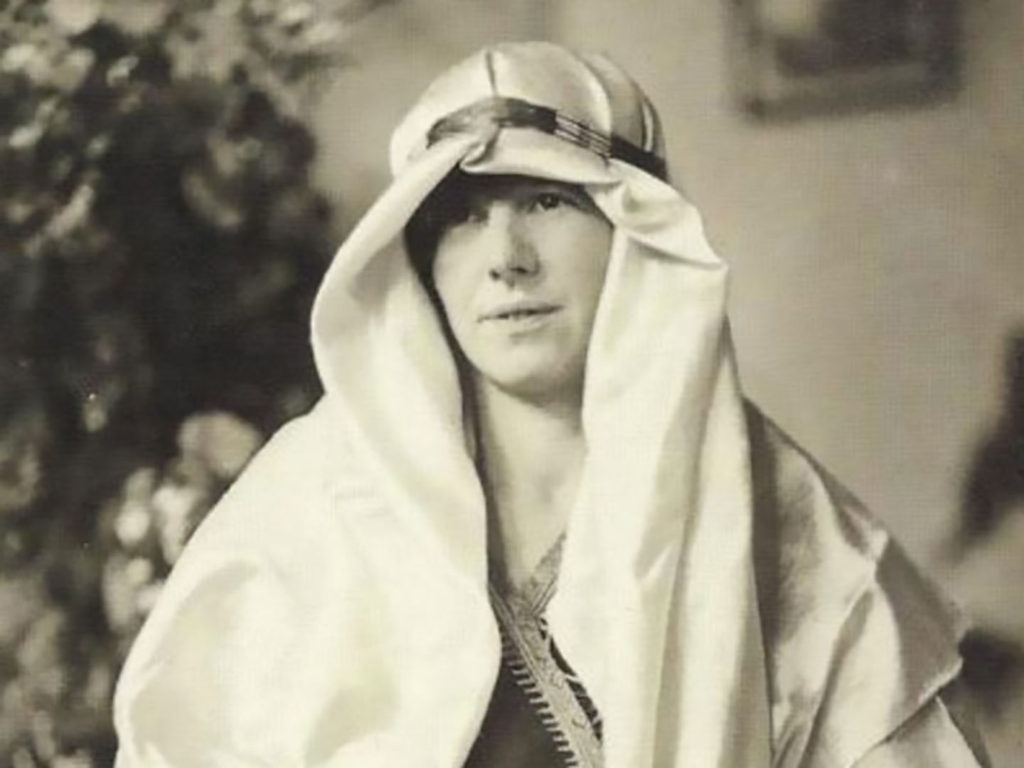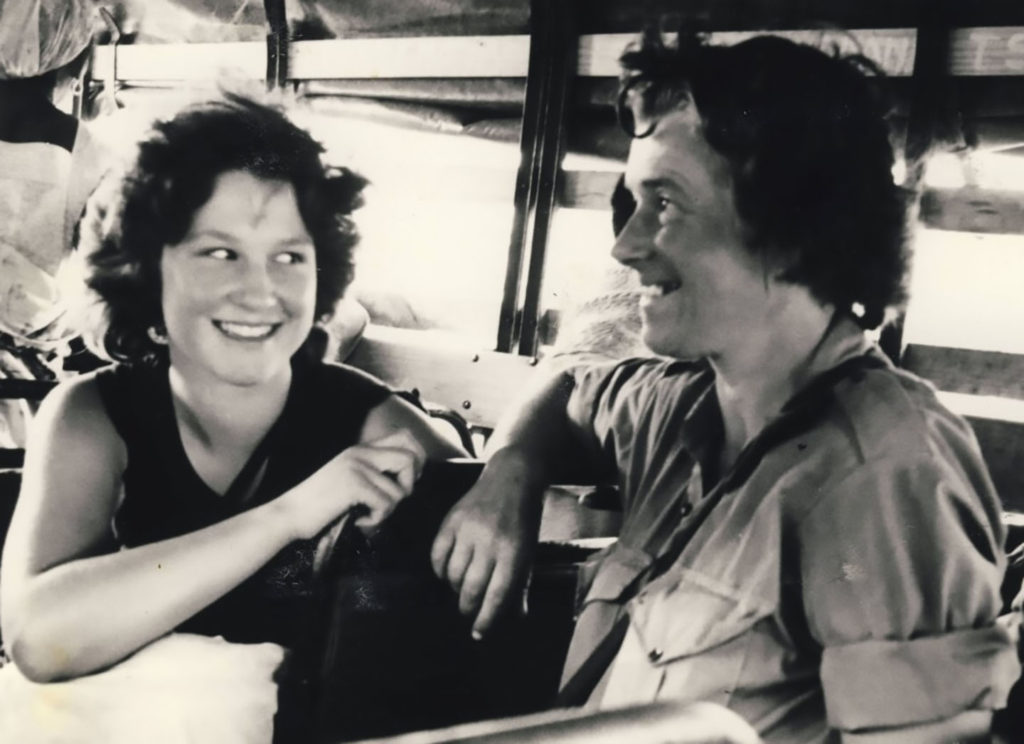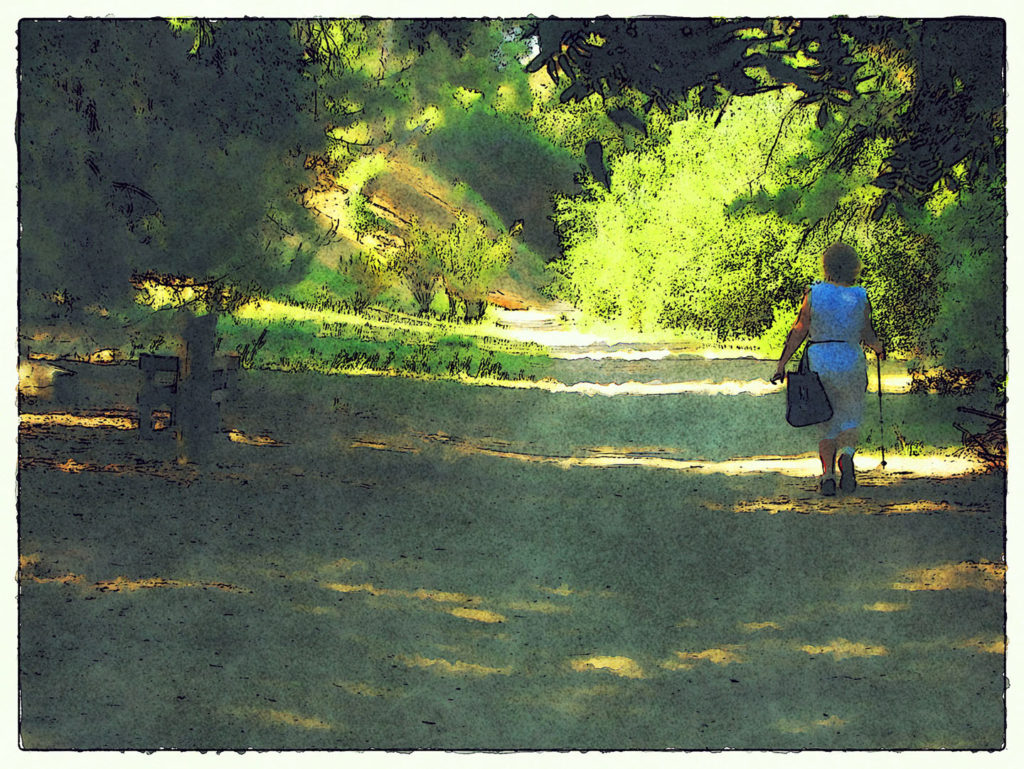Can a Women Travel Writer also “Hem Ragged Shirts?”
“A Lady an explorer? A traveller in skirts?
The notion’s just a trifle too seraphic:
Let them stay and mind the babies, or hem our ragged shirts;
But they mustn’t, can’t, and shan’t be geographic.”
Punch magazine, 1893

Women Travelers, a/k/a Missionaries and Wives
It was always fine for women to travel as missionaries or as diplomatic wives. What began to worry (or amuse) male explorers in the 19th century, however, was that some women began to seek adventure and to wander the wider world on their own, writing diaries and travel books about their experiences.
The World Changes: Women Travel Writers Light Out
A few of these women were scientists or researchers, some were archeologists or historians, and some were wealthy wanderers and dreamers. Their sheer daring and enduring love of discovery still inspire women to light out for the territories today.
The Wilder Shores of Love: Rebels and Women Travelers

Some 50 years ago I was influenced and amazed by a book I read, entitled The Wilder Shores of Love (1954), by Lesley Blanch, herself an intrepid traveler and writer.
In her book, she told the stories of four 18th-and 19th-century European women who escaped their lives in order to explore the world: Isabel Burton, a writer who claimed that she wanted “a wild, roving, vagabond life,” and lived it with her husband, the explorer and adventurer Sir Richard Burton; Jane Digby, a scandalous English aristocrat who finally found love with her fourth husband, bandit Chief Sheikh Medjuel of Arabia, living part of the year with Bedouin nomads; Aimée Dubucq de Rivery, a Frenchwoman captured by pirates who was a member of the Turkish sultan’s harem; and Isabelle Eberhardt, the illegitimate and troubled daughter of a Russian aristocrat, who dressed as a man and wandered the Sahara on horseback. While not travel writers, these women left diaries and journals about their rebellious lives.
Two Women Travel Writers Who Lived to be 100 Years Old (and One Getting There)
These rebellious ladies helped paved the way for a new generation of traveler, ones better equipped to travel the world and describe what they witnessed in a way that was unique. The following three intrepid women, two who lived more than 100 years and one still going strong, were very different people, with different experiences and goals…..but they shared the female gaze that took in the disparate cultures and civilizations in which they moved.
Alexandra David-Neel, Woman Travel Writer
To the one who knows how to look and feel, every moment of this free wandering life is an enchantment.
Alexandra David-Neel (author of My Journey to Lhasa, 1927)
Alexandra David-Neel (1868-1969) was one of a kind: an explorer, writer and devout Buddhist who visited Lhasa, Tibet, in 1924, when it was forbidden for foreigners to do so. She sometimes dressed as a beggar or a monk in order to travel as a woman, undisturbed.
Always adventurous, David-Neel began to run away from home to travel when she was 16, and she eventually reached India at age 21. She traveled to immerse herself in a culture largely unknown to many. Years late–when she was 55—she finally reached Lhasa, having scaled 19,000-foot peaks with no supplementary oxygen or modern equipment. During her life, which spanned almost 101 years, she wrote more than 30 books on eastern religions. Her works remain an authoritative source on Tibetan Buddhism.
Freya Stark: Woman Travel Writer

To awaken quite alone in a strange town is one of the most pleasant sensations in the world. You are surrounded by adventure.
Freya Stark (author of The Valley of the Assassins, 1934)
Anglo-Italian travel writer Freya Stark (1893-1993) explored places where few westerners—and certainly solo women—would travel in the decade before World War II: Syria, Iran, Iraq, Kuwait, and Yemen. Besides being a geographer, mapmaker, amateur archeologist, and tireless diarist, she also knew how to talk to people and find out their lives, thoughts, and beliefs. Her book The Valley of the Assassins follows her journey through the lands between Iraq and Iran, and her writings (more than two dozen travel and autobiographical works and essays) described her perceptions about the lives of the nomadic people living there.
Stark is credited with demonstrating an understanding of and compassion towards the different peoples she encountered. Some saw her as a bridge between the mid-Victorian romantics who saw only an exotic East and a trained scientist who was struck by an ancient culture at odds with the West’s “soulless commercialism.”
Dervla Murphy: Woman Travel Writer

It doesn’t take courage. It takes curiosity.
Dervla Murphy (author of Full Tilt: Ireland to India with a Bicycle, 1965)
My brother-in-law, who worked in publishing and was a tireless reader, gave me Full Tilt because he knew that I would consume it avidly, and I did. At first glance, Dervla Murphy (1931—) seems to be a traveler of a different kind than were David-Neel and Stark, but what they shared was a desire to understand the cultures in which they moved.
She has traveled the world for more than seven decades, mostly alone (and at times with her young daughter, Rachel), and mostly by bicycle. She wrote of her surroundings with great appreciation and an abiding sense of curiosity. But, like David-Neel and Stark, her growing political sensibility about the cultures in which she traveled took a strong hold and was expressed in her writings.
Along the way she experienced constant potential disasters, which she called challenges: tick bite fever in South Africa, a fractured coccyx and a broken foot in Romania, an abscess in the Cameroon, gout in Madagascar, and a dog bite in Belfast. But that didn’t stop her. Her treks covered South Africa; Tibet and Nepal; Ethiopia, Gilgit-Baltistan, an isolated northern province in Kashmir territory; the Karakoram mountains; Siberia; Cameroon; Kenya; Zimbabwe; Peru; Madagascar; Rwanda; Laos; the Balkans; Cuba; and Israel and Palestine.
When told by an interviewer that she was courageous for setting off on her journeys, she replied, “It doesn’t take courage. It takes curiosity.”
Women Writers Who Traveled
Other women—whose fame lay not in travel writing per se, but who wrote about their travels in ways that illuminated the culture of the places they visited or in which they lived include Edith Wharton, Vita Sackville-West, Zora Neale Hurston, Martha Gellhorn, Jamaica Kincaid, and many many more.
Women Travel Writers: A New Generation
Women who have written about the world and their journeys through it have often encountered the same challenges as have men, and, in many cases, have experienced even more difficult challenges. Women travel writers today are inspired by the brave souls who shook off the expectations of society in order to explore. May their writing continue to inspire and challenge women so that they may continue their journeys and to share them with us all.

